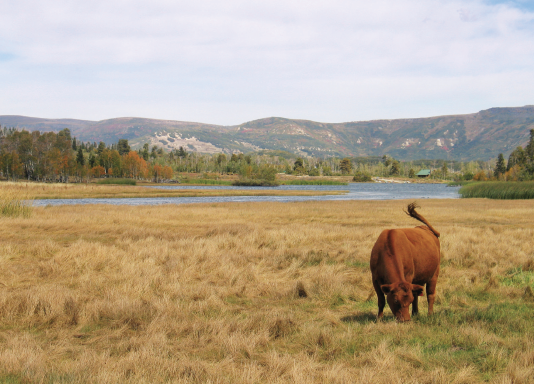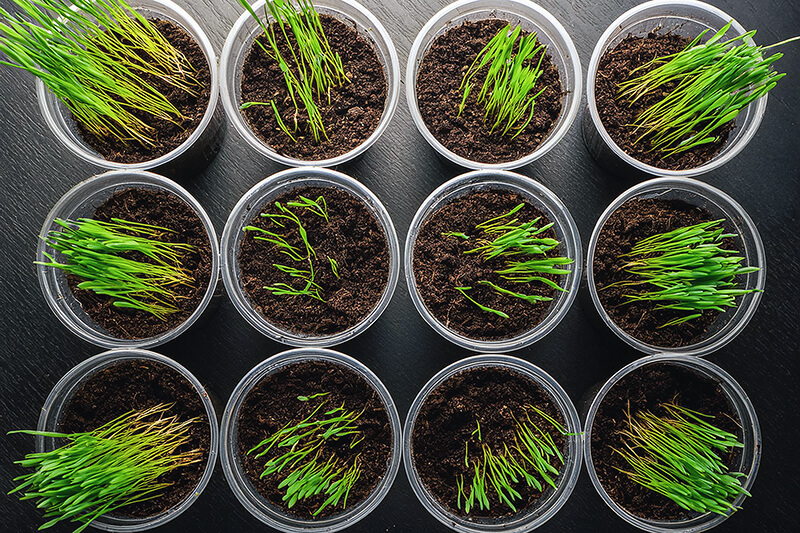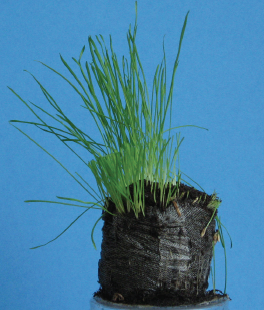What is rangeland?
When the term rangeland first came into use in the 1800s, it was used to describe the extensive, unforested lands dominating the western half of North America. Today, rangeland refers to a large, mostly unimproved section of land that is used for livestock grazing. Rangelands can be found in a wide variety of ecosystems, including natural grasslands, savannas, shrublands, deserts, tundras, alpine communities, coastal marshes, and wet meadows. Rangelands are usually mountainous, rocky, or dry areas that aren’t suitable for growing the usual farm crops. However, grass and other plants on this rangeland can be used for grazing livestock. People can’t eat grass but cattle and sheep can turn grass into beef and lamb.
As the human population continues to grow, more space is needed for neighborhoods, businesses, and the cultivation of crops. There are 1.8 billion acres in the United States. This is all the land available for homes, schools, airports, roads, farms, ranches, recreational areas, wildlife habitat, and everything else. Rangelands are important because they provide multiple goods and services and support many uses within the same space; they are multiple-use lands. Rangeland ecosystems provide nutritious forage for grazing livestock, which produce food, fiber, leather, and many other useful by-products. These same rangelands provide forage and habitat to wildlife (including many threatened and endangered species), numerous recreational opportunities, and a unique setting for social and cultural activities. We depend on these goods and services and expect them to be sustained for the benefit of future generations.
In order to use rangelands in all of these ways without damaging them, it is important that rangeland health be closely monitored and managed. So, who owns and manages rangelands? Ranchers may use their own private land to graze their animals or pay a fee to the government to lease public rangeland. Permits are issued by both the Forest Service and the Bureau of Land Management to allow grazing on public lands. Federal rangeland managers and private livestock owners work cooperatively to ensure that public rangelands are well cared for. Well managed grazing can be both economically and ecologically beneficial. Compared with harvested feeds like corn and wheat, range and pasture provide a relatively inexpensive feed source for livestock. Sales of livestock and other ranching activities contribute to the strength of local economies. Properly managed livestock grazing can also help keep grasslands healthy.
Rangeland management begins with grass. We tend to take grass for granted because there seems to be so much of it. In fact, there is a lot of grass. It is one of our most important and available renewable resources. Grass plays a number of environmentally important roles. Grass covers the soil and holds it in place, slowing runoff of rain, preventing erosion, and reducing the potential for floods. Grass traps and filters sediments and nutrients from runoff, and helps water percolate through the soil and back into streams and ground water.
Cattle and sheep are like rangeland lawn mowers that can help care for grassland ecosystems. Imagine what your lawn would look like if you didn’t mow it! At first glance when we see animals grazing, it seems like the animal wins all. However, there are more winners here than first meets the eye. The moment grass is shorn, it seeks to restore a balance between its roots and leaves. When the tops of the grass leaves are eaten by grazing livestock, the same amount of root is lost. When the roots die, the soil’s population of bacteria, fungi, and earthworms gets to work breaking down the dying roots. This creates fertile organic matter that enriches the soil.
Rich soils in turn support more grass growth. Grasses regrow from the bottom up. Because their growing point is low to the ground, grasses can usually recover well after grazing. However, repeated, heavy grazing can kill grass. When a grass plant is grazed very low to the ground, a large portion of its roots die, and it has little leaf area left to make energy through photosynthesis. Because the plant can’t generate much energy, it takes a long time for the roots to regrow, and the plant is very susceptible to drought. Proper management of grazing involves moving livestock to a new area before grasses are grazed too low and allowing grasses a period of rest to regrow leaves and roots before grazing them again. With proper management, grazing can be a tool for keeping rangelands healthy.
In well-managed grasslands, decaying roots are the biggest source of new organic matter, and grazing animals actually build new soil from the bottom up. In the absence of grazers, the soil-building process would be nowhere near as swift or productive. Grazing cattle aerate the soil with their hooves, scatter seeds, and trim wild grasses. Wildfires have a harder time taking hold on shorter, cropped grass than on longer vegetation. Properly grazed or “mowed” grass can help create healthy green grass!


